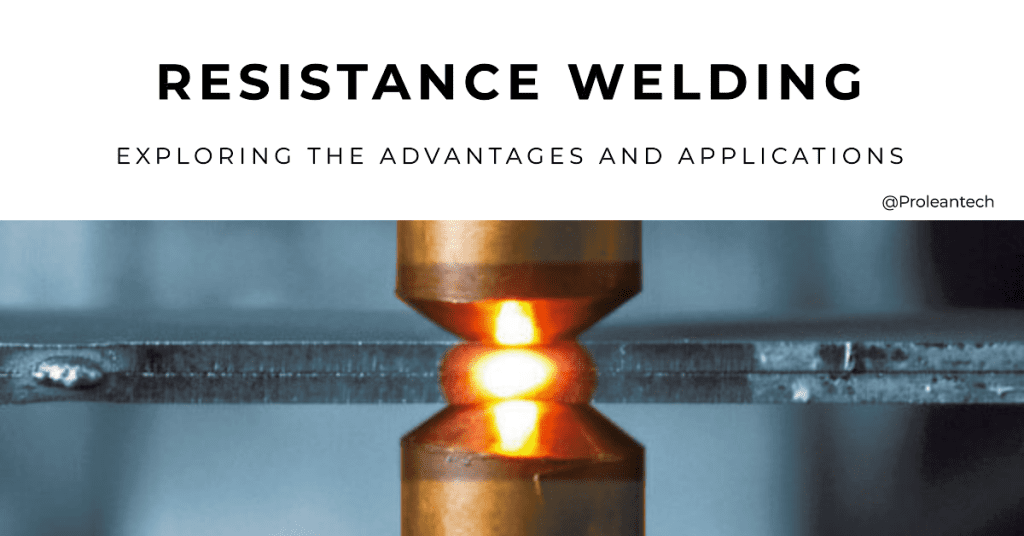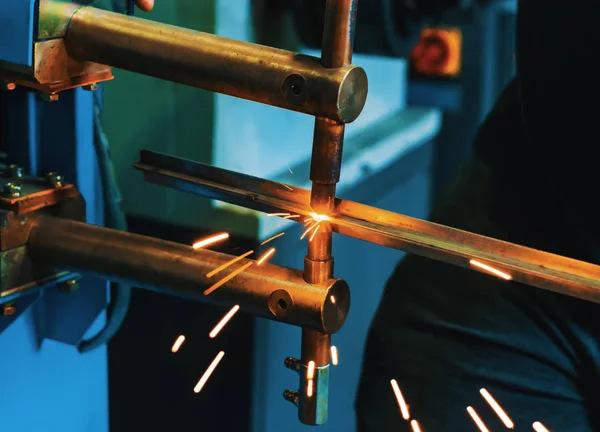
In today’s highly competitive manufacturing landscape, companies are constantly looking for ways to improve their processes and overall efficiency. One such method that has gained popularity in recent years is resistance welding. Modern manufacturers have found a reliable and efficient way to join metal components through resistance welding, offering numerous benefits and applications across various industries.
This article aims to provide a comprehensive overview of resistance welding, including its advantages, applications, and the various types of techniques used in the industry.
What is Resistance Welding?
Resistance welding is a process that uses electrical current and mechanical pressure to join metal components together. The basic principle behind this technique is the generation of heat by passing an electrical current through the metals being joined. The heat generated is sufficient to cause the metals to reach their melting point, creating a bond between them.
The resistance welding process is relatively simple and can be broken down into three main steps. First, the metal components are placed between two electrodes, which are typically made from a conductive material such as copper. Next, an electrical current is passed through the electrodes and the metal components, generating heat at the point of contact. Finally, mechanical pressure is applied to the heated metal components, causing them to fuse together.
Types of Resistance Welding Techniques

Resistance welding
There are several types of resistance welding techniques, each suited for different applications and materials. Some of the most common techniques include:
- Spot welding: This is the most widely used resistance welding technique, and it involves joining two or more metal components at specific points or “spots”. Spot welding is commonly used in the automotive industry for assembling body panels and other components.
- Seam welding: Seam welding is a continuous resistance welding process that involves joining two metal sheets along a continuous seam. This technique is used for applications that require a watertight or airtight seal, such as fuel tanks and radiators.
- Projection welding: In projection welding, small projections are formed on one of the metal components being joined. These projections concentrate the electrical current and heat, making it easier to weld thicker materials or join dissimilar metals.
- Flash welding: This technique involves rapidly heating the metal components using an electrical current and then quickly applying mechanical pressure to forge them together. Flash welding is commonly used for joining larger components, such as railroad tracks and pipes.
Advantages
Resistance welding offers numerous advantages to modern manufacturers, including:
| Advantage | Description | Example Industries |
|---|---|---|
| Efficiency | Requires minimal preparation and can be completed quickly | Automotive, electronics, construction |
| Consistency | Highly controlled and automated process, allowing for consistent weld quality and repeatability | Aerospace, automotive |
| Low heat input | Generates heat only at the point of contact between metal components, reducing the risk of heat-related damage and deformation | All industries |
| Cost-effectiveness | Lower operating costs compared to other welding methods, as it does not require shielding gases or filler materials | All industries |
| Environmentally friendly | Generates minimal emissions and waste, helping manufacturers comply with environmental regulations and reduce their overall environmental impact | All industries |
Try Prolean Now!
Common Applications
Resistance welding is used in a wide range of industries for various applications, including:
| Industry | Common Applications | Example Materials |
|---|---|---|
| Automotive | Assembling body panels, chassis components, brackets, hinges, and fasteners | Steel, aluminum |
| Aerospace | Joining lightweight materials used in aircraft structures | Aluminum, titanium alloys |
| Electronics | Joining small electronic components such as wires and connectors | Copper, gold |
| Consumer Goods | Manufacturing household appliances and consumer goods such as refrigerators, washing machines, and cooking appliances | Stainless steel, aluminum |
| Construction | Joining steel reinforcement bars, mesh, and other structural components | Steel |
Essential Resistance Welding Equipment and Tools

Resistance welding machine
In order to perform resistance welding effectively, manufacturers require a range of specialized equipment and tools, including:
- Welding machines: Resistance welding machines are the primary equipment used in the process, and they are designed to deliver the required electrical current and mechanical pressure to create a strong weld. These machines are available in various configurations, such as benchtop, floor-standing, and robotic systems, depending on the specific application and production requirements.
- Electrodes: Electrodes are conductive elements that transfer the electrical current to the metal components being joined. They are typically made from copper or copper alloys, as these materials offer excellent electrical conductivity and resistance to wear.
- Welding controllers: Welding controllers are used to regulate the electrical current and mechanical pressure applied during the welding process. This ensures consistent weld quality and repeatability, which is essential for high-volume manufacturing.
- Tooling: Customized tooling is often required for specific resistance weldings applications, such as fixtures, clamps, and alignment devices. These tools ensure that the metal components are held in the correct position during the welding process, ensuring a strong and consistent weld.
The Right Resistance Welding Service
Choosing the right resistance welding manufacturers and suppliers is crucial to ensuring the success of your manufacturing processes. ProleanTech Welding Services is a leading provider of resistance welding equipment and services, with a reputation for quality, reliability, and innovation.
With a comprehensive range of resistance welding machines, electrodes, controllers, and tooling, ProleanTech Welding Services can provide the ideal solution for your specific manufacturing requirements. Their team of experienced technicians and engineers can also offer expert advice and support to help you optimize your resistance welding processes and achieve the best possible results.
The Role of Resistance Welding in the Future of Manufacturing
As manufacturing technologies continue to evolve and advance, resistance welding is expected to play an increasingly important role in modern manufacturing processes. With its numerous advantages, such as efficiency, consistency, and cost-effectiveness, resistance welding is well-suited to meet the demands of the rapidly changing manufacturing landscape.
In particular, the ongoing trend towards automation and Industry 4.0 is expected to drive further development and adoption of resistance welding technologies. As more manufacturers embrace automation and data-driven processes, the need for reliable, consistent, and efficient welding methods, such as resistance welding, will only continue to grow.
Challenges and Limitations
Despite its many advantages, resistance welding does have some limitations and challenges that manufacturers need to be aware of, including:
- Material compatibility: Resistance welding is most effective with materials that have high electrical conductivity and low thermal conductivity, such as steel and copper. Some materials, such as aluminum, can be more challenging to weld using resistance welding techniques due to their high thermal conductivity and low melting point.
- Thickness limitations: Resistance welding is generally best suited for joining thin materials, as thicker components may require excessive electrical current and mechanical pressure to achieve a strong weld. In these cases, alternative welding methods may be more appropriate.
- Joint design: The design of the joint and the configuration of the metal components can impact the success of the resistance welding process. For example, complex joint geometries may require specialized tooling or electrode designs to ensure effective welding.
Conclusion
In conclusion, resistance welding is a highly efficient and effective method for joining metal components in modern manufacturing processes. With its numerous advantages, such as cost-effectiveness, consistency, and low heat input, resistance welding offers manufacturers a reliable and versatile solution for a wide range of applications across various industries.
By selecting the right resistance welding equipment and working with experienced manufacturers and suppliers, such as ProleanTech Welding Services, manufacturers can unlock the full potential of this powerful welding technique and stay ahead of the competition in today’s dynamic manufacturing landscape.
FAQs
What is resistance welding?
Resistance welding is a process that uses electrical current and mechanical pressure to join metal components together. The heat generated by the electrical current causes the metals to reach their melting point, creating a bond between them.
What are the main types of resistance welding techniques?
The main types of resistance welding techniques include spot welding, seam welding, projection welding, and flash welding.
What are the advantages of using resistance welding in modern manufacturing?
Some of the main advantages of resistance welding include efficiency, consistency, low heat input, cost-effectiveness, and environmental friendliness.
What industries commonly use resistance welding?
Resistance welding is used in a wide range of industries, including automotive, aerospace, electronics, consumer goods, and construction.
What equipment and tools are required for resistance welding?
Essential resistance welding equipment and tools include welding machines, electrodes, welding controllers, and customized tooling.




0 Comments